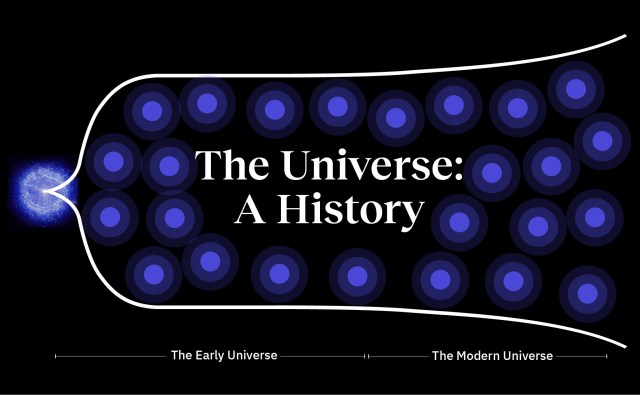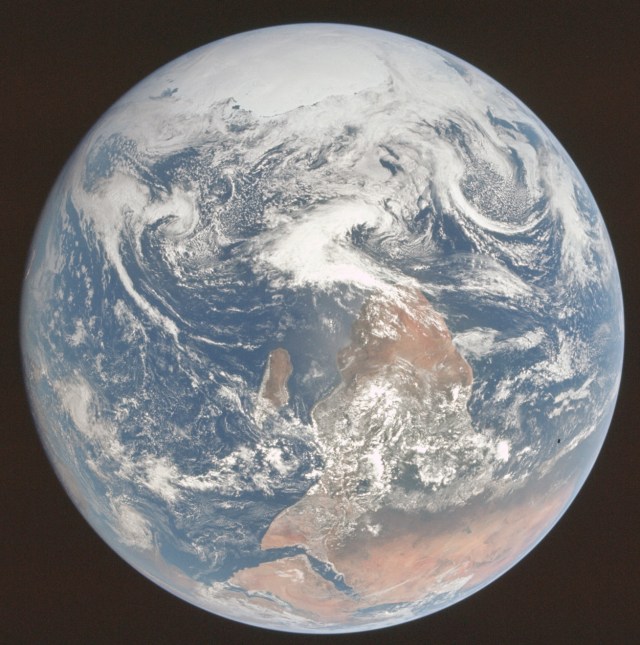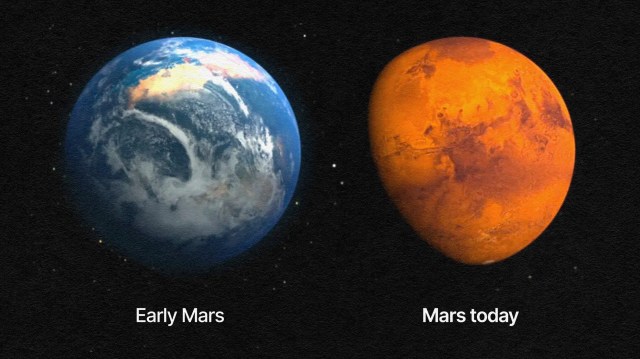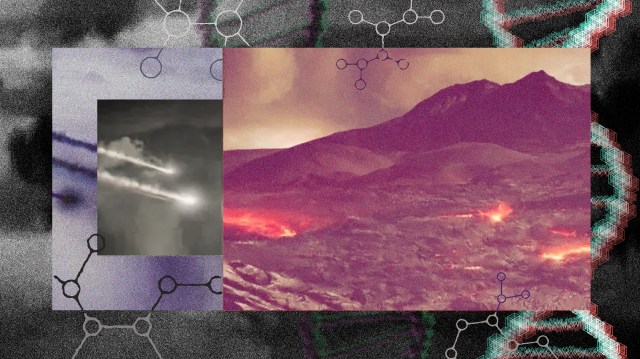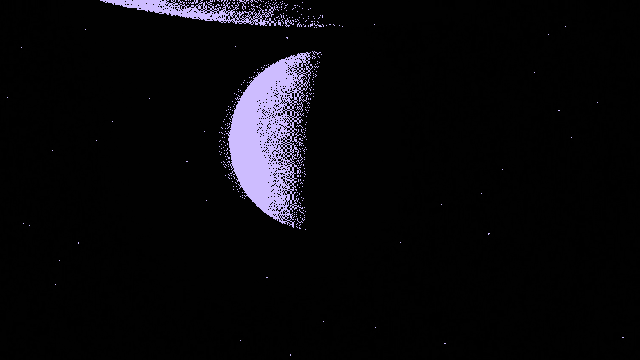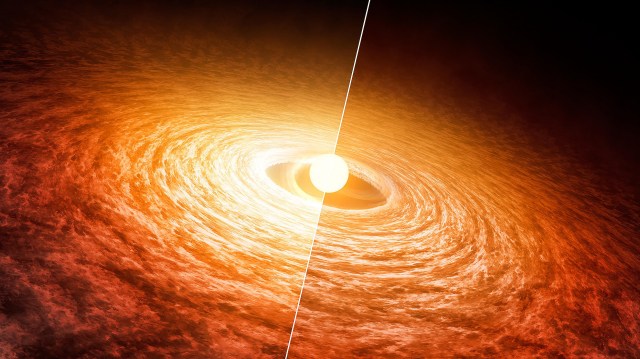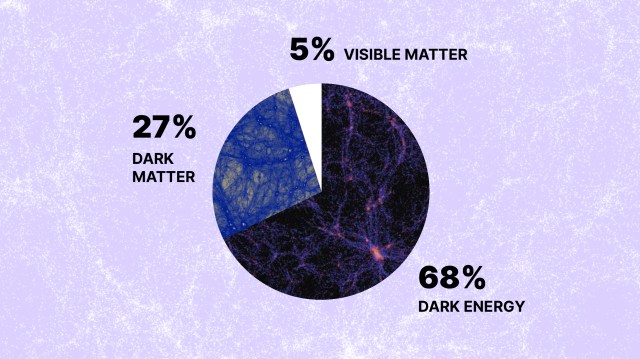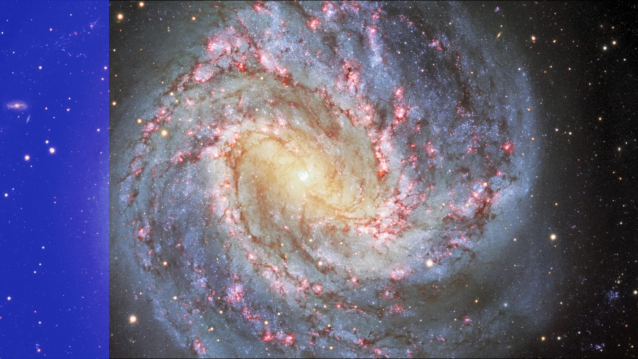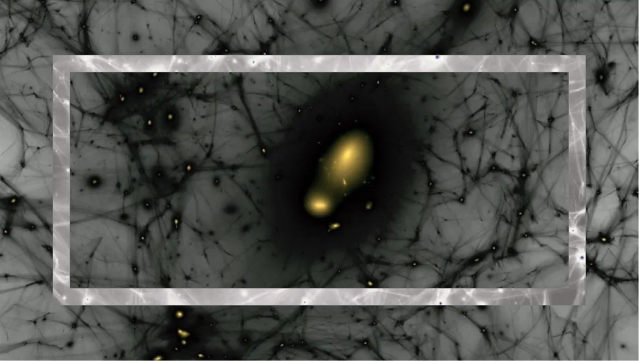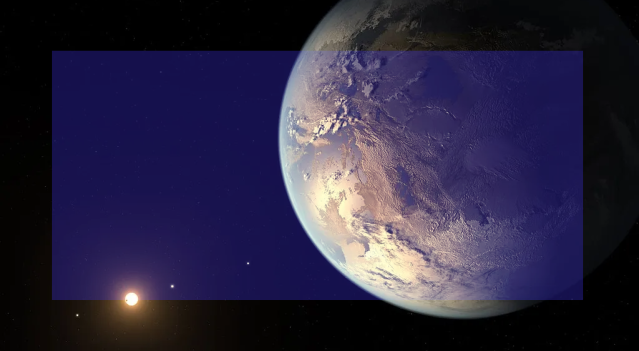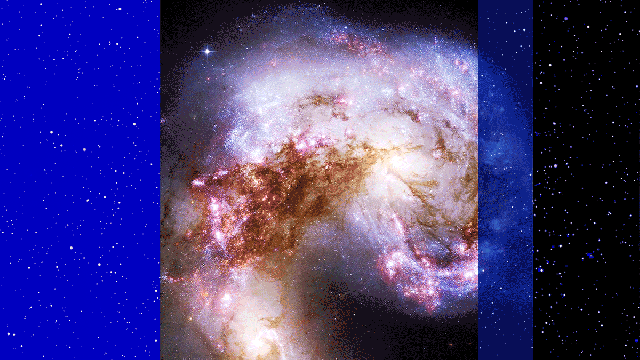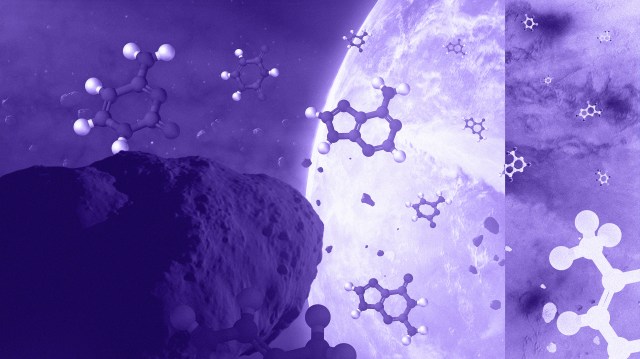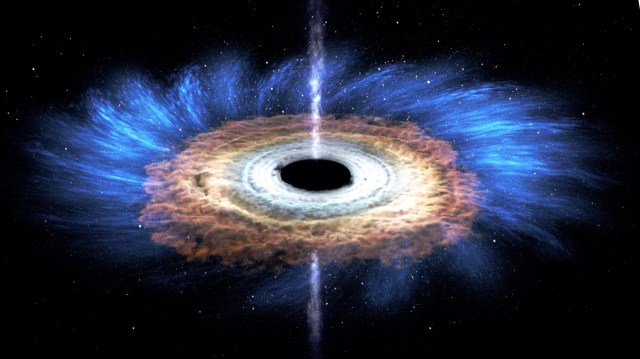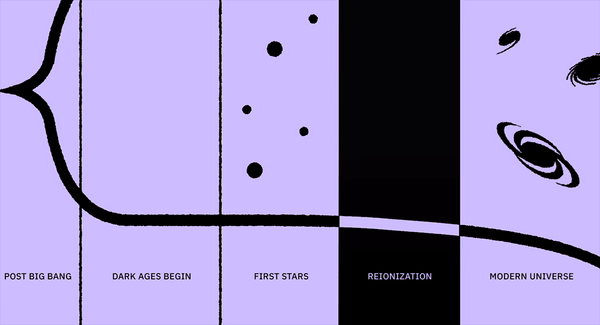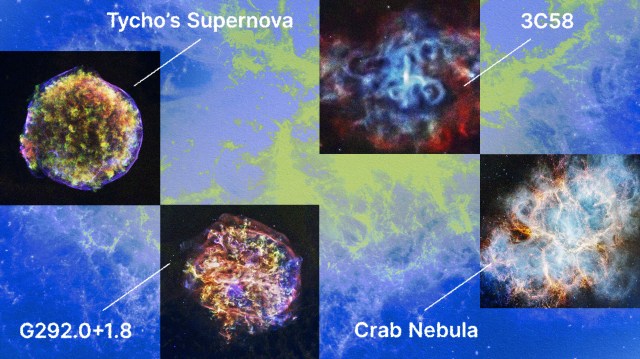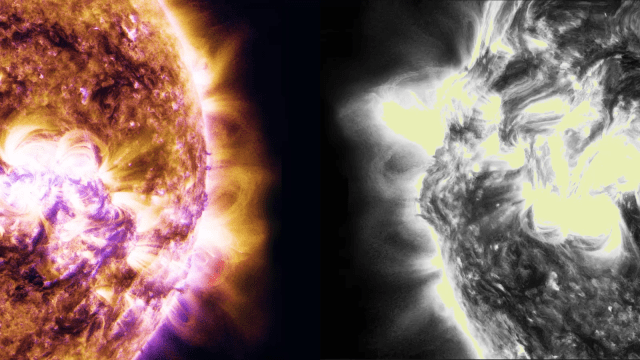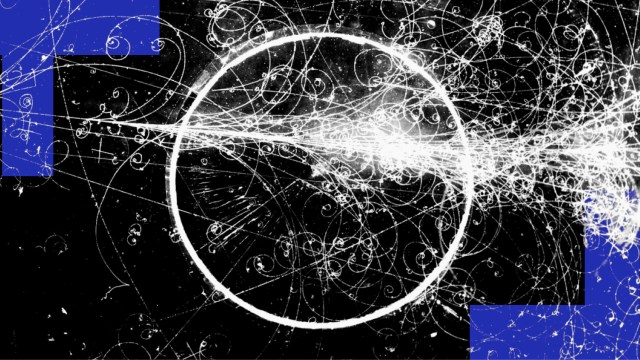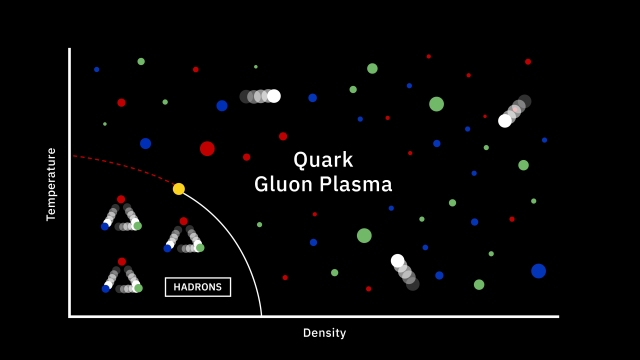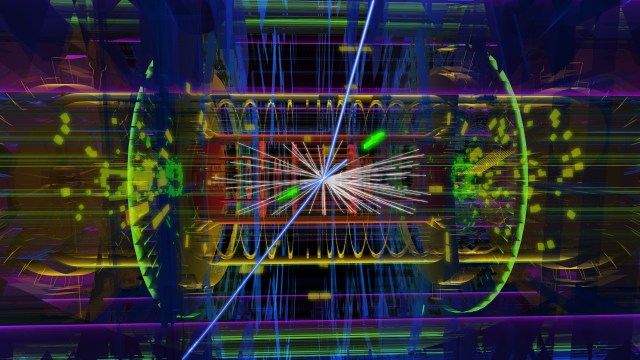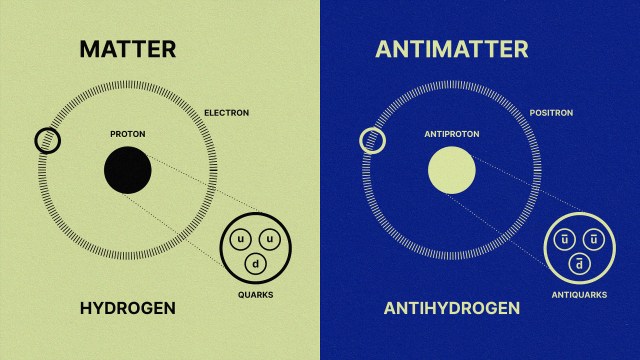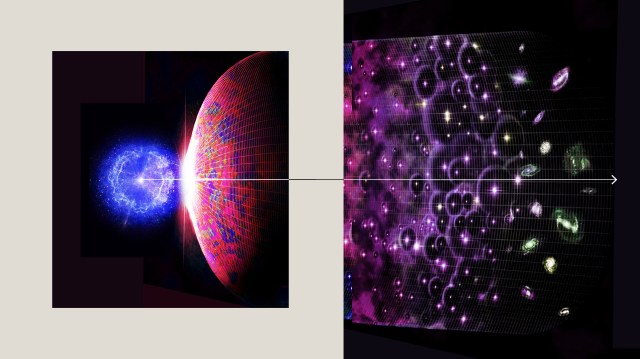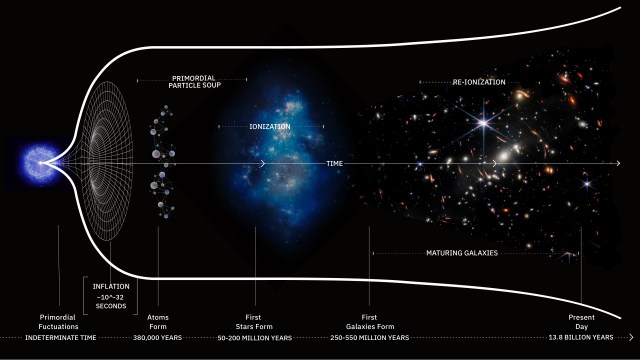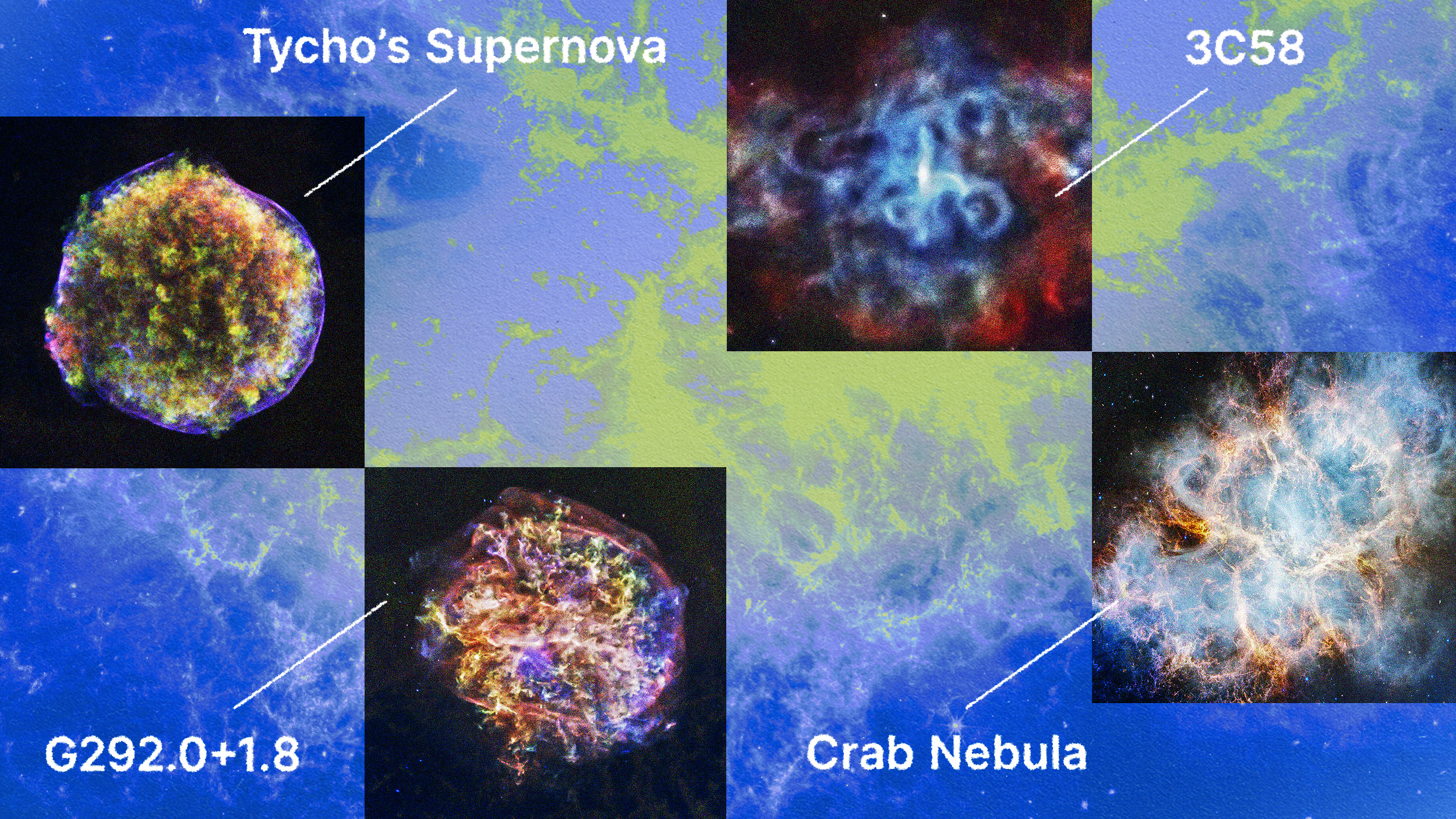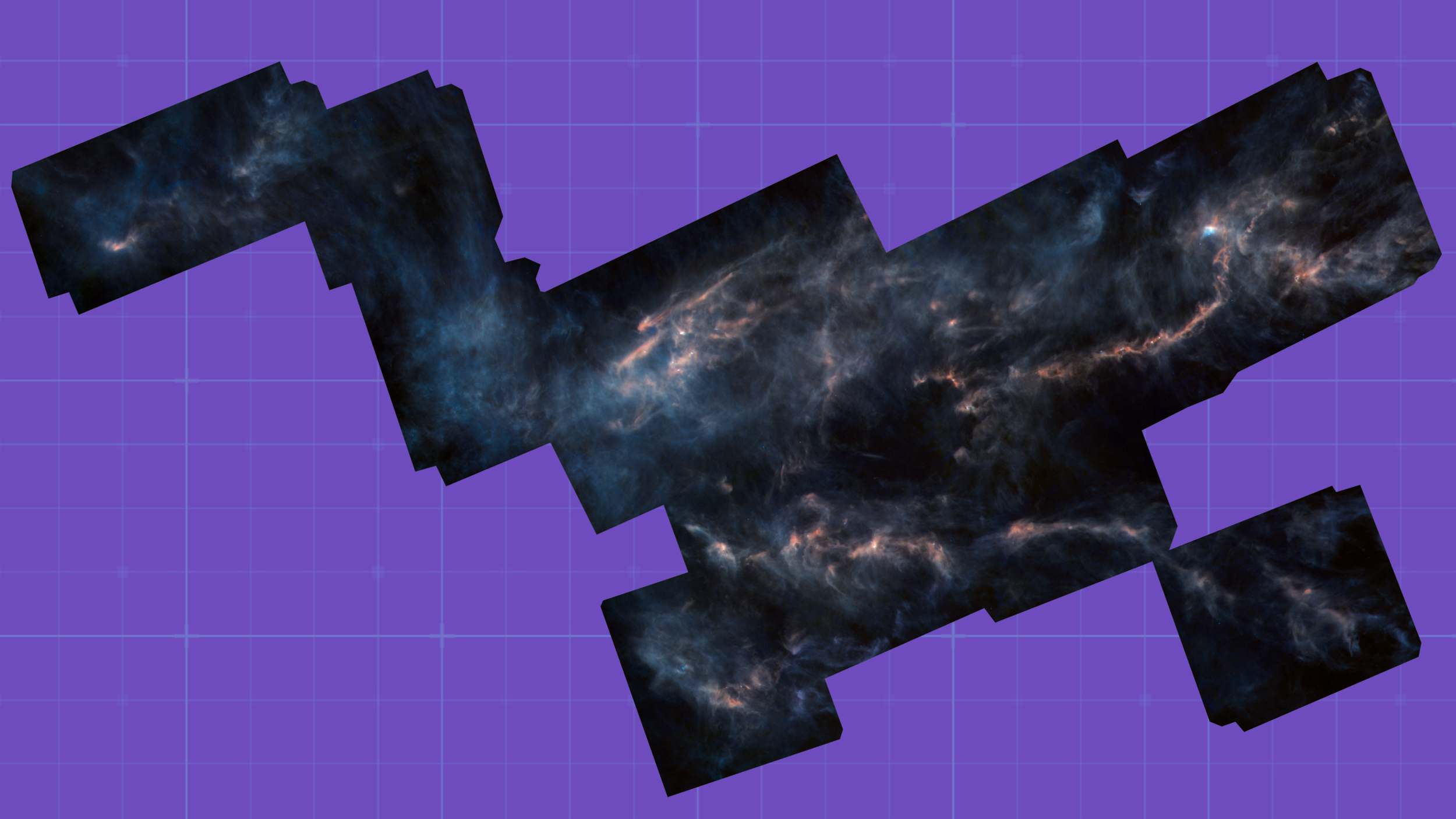What was it like when the first galaxies began to form?
- The first stars in the Universe form within clouds of gas, clumping together in clusters which continue to not only form new stars, but to attract matter into them.
- Over time, both via the infall of new material and also from merging with other nearby clumps of matter, these star clusters eventually grow up into galaxies.
- Although we’ve seen incredibly far back in time, having found galaxies as early as just 320 million years after the Big Bang, we still haven’t found the first galaxies of all. Here’s what we’re seeking after.
Whenever you look out beyond the Milky Way today, as far as anyone’s ever been able to see, there’s no place you can look where you won’t eventually find a galaxy. There are galaxies absolutely everywhere, in all directions and locations, even at the greatest cosmic distances ever probed. Even if you were to take a dark patch of sky without any known stars, galaxies, or matter of any type within it, if you leave your telescope’s shutter long enough and you look in the proper wavelengths of light, thousands upon thousands of galaxies will be your reward. All told, there are estimated to be many trillions of galaxies found within the observable Universe, stretching for tens of billions of light years in all directions.
Yet, despite all the galaxies we’ve observed and measured their properties, never have we gone far enough back to encounter the very first ones ever made in the Universe. The current record-holder, despite its light arriving from when the Universe was only 320 million years old — 2.3% of its present age — is already evolved and full of old stars. The very first galaxies have not yet been discovered and must come from a time earlier than the epochs humanity has ever probed. But if we get lucky, we’ll get there soon. Here’s what those galaxies should be like.
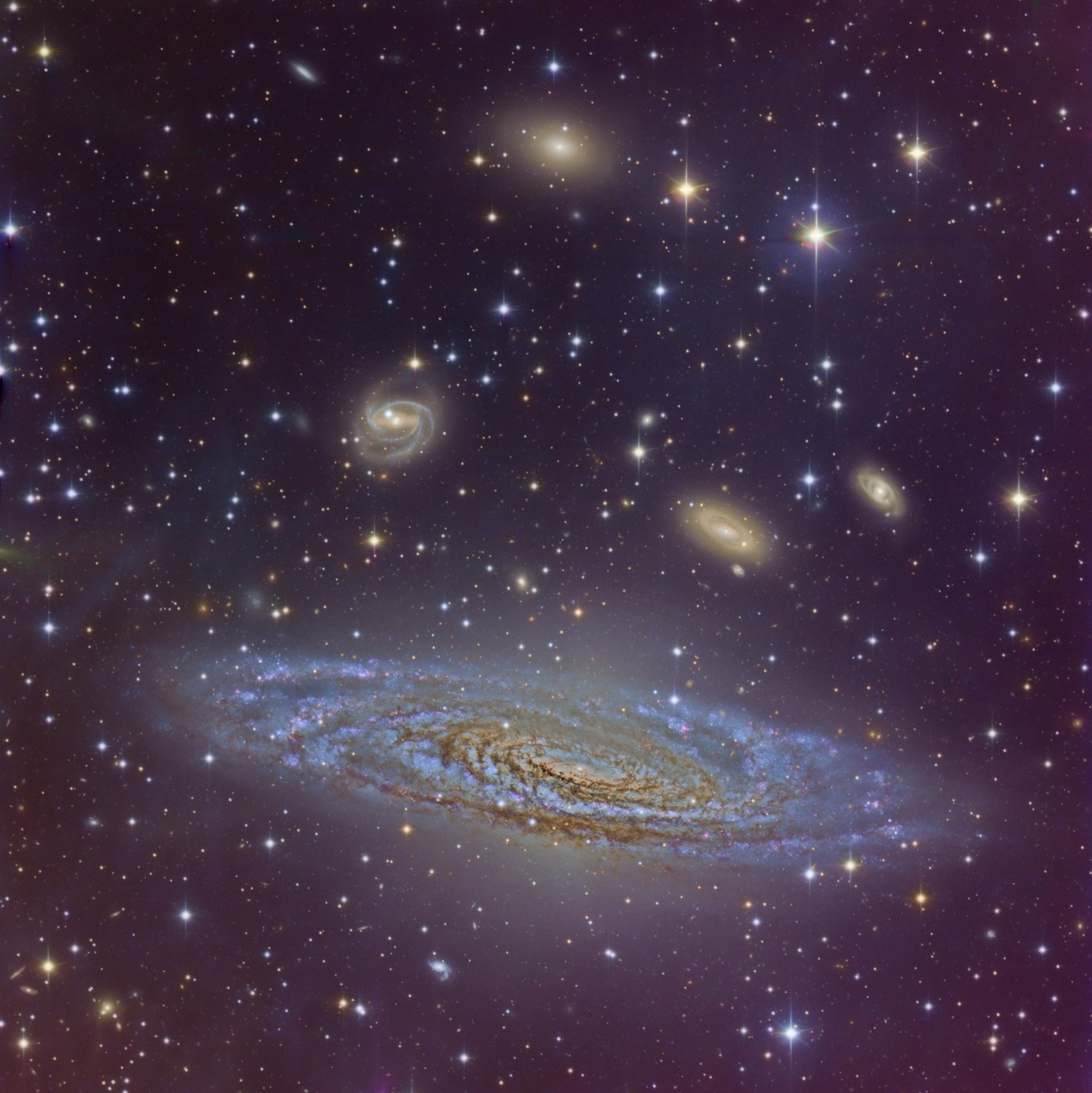
The galaxies we see today, even the earliest, most distant ones, are already old. They’re massive, they’re huge, and they’re full of a variety of stars. For the most part, there are lots of heavy elements in there: approximately 1-2% of all the atoms present in most galaxies (by mass/weight) are composed of materials other than hydrogen or helium. That’s a big deal, considering that the Universe was born without carbon, nitrogen, oxygen, silicon, sulfur, iron, or practically any of the elements we find in stars and galaxies today. It was 99.999999% hydrogen and helium to start, but that’s down to 98-99% by today.
But it’s had billions of years and many, perhaps an innumerable amount, of generations of stars that lived-and-died previously to bring the types of galaxies we’re observing, complete with the variety of stars and stellar populations we find within them. If we look back to the distant Universe, we also look back in time, and find that galaxies were vastly different back then from how they appear today. They were smaller, bluer, more numerous, and poorer in these heavy elements than the galaxies we have today. Over the history of the Universe, galaxies have evolved substantially.

But how did the very first galaxies form? And what was the Universe like when they first arose?
The cosmic story that brought them to us saw a number of important steps happen first. Matter won out over antimatter; atomic nuclei and then neutral atoms formed; the first generation of stars were born, died, and gave rise to the second generation of stars. But even after all these steps, there were still no galaxies around. The simple reason? The smallest-volume cosmic scales gravitationally collapse first, while the larger scales take longer.
Think about two important factors at play here: gravity and the speed of light. Gravity is the only mechanism that can bring ever larger and larger clumps of matter together. It’s limited, however, by the speed at which things can gravitationally grow, and it only propagates at the speed of light. Given that the Universe as-we-know-it began a finite amount of time ago with the hot Big Bang, and that the speed of gravity propagates at a finite speed, it makes sense that the overdensities on small cosmic scales would collapse first, making stars the first things that form, while larger scales (for galaxies, galaxy clusters, and the grand cosmic web) take longer amounts of time for gravity’s influence to dominate.
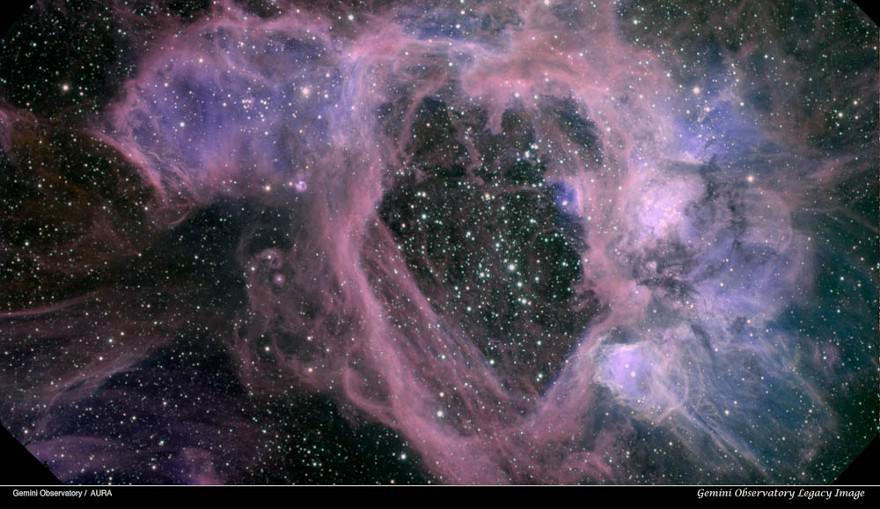
Imagine you start with a small mass: a clump of matter that rises by some amount over and above whatever the average density happens to be. If you have some additional mass for it to attract that’s a light-year away, it will take that matter an entire year to feel the force from the mass, since the gravitational force only travels at the speed of light. But if there’s an additional mass a hundred, or a million, or a billion light-years away, you have to wait for all that additional time to pass. Gravity isn’t instantaneous; it only travels at the speed of light.
So what happens, then, when you finally get a large amount of mass together in one place, from the gravitational collapse of your first stars and star clusters? They attract one another, and can finally do so effectively.
But the timescale for one massive star cluster attracting another is going to be much longer than the timescale for individual star clusters to form. Instead of looking at volumes of space that might be a few tens, hundreds, or even thousands of light-years on a side — the scale of what might collapse to form a star cluster — you need to look on scales tens-to-hundreds of times as large to bring together enough matter to start to make the first galaxies.

Remember this fact, as well: that the original overdensities that lead to both star clusters and galaxies are only one-part-in-about-30,000, meaning that these overdensities need to grow over large amounts of time. If it takes gravity tens-to-hundreds of times as long to propagate between star clusters (and hence, for those star clusters to gravitationally influence one another) than it does for gravity to propagate within an individual cluster, you might worry that it would wind up taking tens-to-hundreds of times as much time to make galaxies as compared to how long it took to make the first stars.
Luckily, this isn’t true! That’s an overestimate; the amount of time it takes to create galaxies is indeed longer than the amount of time it takes to make stars and star clusters, but not by nearly that severe of an amount. The power of an attractive gravitational force is cumulative, so it’s basically like starting a clock on a delay. The “star cluster” clock starts a few million years after the Big Bang; the “galaxy” clock begins perhaps ten million years after that, and starts with a handicap: it has farther to go to collapse.

But this is okay! This is simply how structure formation works in the Universe as we look to progressively larger cosmic scales. We have, at the start, density imperfections existing on all scales, and they grow as soon as enough time has passed for gravity to begin attracting matter that’s located a certain distance away. We form the first star clusters quickly, after perhaps 50-to-100 million years. We form the second generation of stars almost immediately after, in another 5 million years or less, because the first generation of stars lives-and-dies so fast, and the material ejected back into the interstellar medium triggers a new generation of stars to begin forming shortly thereafter.
However, we then have to wait several tens of millions of years after those “polluted” stars form for the first galaxies to begin to take shape. The reason is that, in order to make galaxies out of these star clusters, those early star clusters must attract one another across the abyss of empty space, until they finally draw one another in so that they can merge. And it requires even longer timescales for large galaxies and then galaxy groups and galaxy clusters to arise. In this sense, structure formation in the Universe is a process that we call hierarchical.

The hardest challenge, observationally, when it comes to finding these first galaxies is that there haven’t yet been enough stars formed throughout the Universe to ionize all the neutral atoms in intergalactic space. So long as protons and electrons remain bound to one another, they behave as neutral atoms, which block and absorb light, particularly visible and ultraviolet light, which is a property that astronomers call “extinction.” The more neutral matter you have, the more efficiently your starlight gets extincted, which makes it all the more difficult to observe the light that’s being emitted behind this thick curtain of light-blocking material.
These conditions will remain until the Universe is flooded with enough sustained ultraviolet light to permanently kick those electrons off of their atoms. This means that so long as the light from the first stars (and first galaxies) gets absorbed by those atoms; the Universe remains in an opaque state, rather than a transparent one. The earliest galaxies we’ve ever seen date back to as little as 320 million years after the Big Bang, and these most distant galaxies were only discovered because they are both:
- located along a serendipitously more-ionized-than-average line of sight,
- and also because we’re observing them at long wavelengths, where the emitted ultraviolet light gets stretched and redshifted well into the infrared portion of the spectrum.

However, there’s a method for attempting to “date” the age of the first galaxies that doesn’t necessarily involve finding these first galaxies directly. It’s clever, powerful, and educational to explore. Take, for example, the galaxy MACS1149-JD1. Before we entered the JWST era, it was the second-most-distant galaxy ever found, whose light arrives from 530 million years after the Big Bang. (Now it’s down somewhere around 12th place, showcasing the unprecedented power of JWST.) This is not a pristine galaxy, but it is a galaxy with a remarkable property: we can measure the populations of stars inside, and determine an age for those stars.
When we make those critical observations, we find that the stars inside of it are approximately 280 million years old, meaning that they first formed in a massive burst that occurred no later than 250 million years after the Big Bang. These massive bursts of star formation don’t simply occur because you had a star cluster; they occur when large mergers happen, giving rise to what astronomers call a starburst. Colliding gas causes material to collapse, which can trigger massive amounts of new star formation. Much larger and more powerful than a monolithically collapsing star cluster, these post-merger objects should signify the true first galaxies.

These first galaxies will be larger, contain more stars, be more massive, more luminous, and will leave an unmistakable signature as compared to the individual star clusters that came before. In fact, the first galaxies should create an observable imprint on the Universe, one that can be detected with a method known to astronomers today: 21 cm mapping. Not only will the stars that form within these early galaxies begin contributing to the reionization of the Universe, but wherever new stars are formed, we will find electrons recombining with their ionized nuclei. That act, when it occurs for hydrogen atoms, has a 50% chance of forming a configuration where the spins are aligned (up-up or down-down) and a 50% chance where the spins will be anti-aligned (up-down or down-up).
The up-down or down-up configurations are more stable, by a tiny amount. If you form the aligned configuration, it will transition down to the anti-aligned configuration on timescales of around 10 million years. And when it transitions, it emits a photon of a very specific wavelength: 21 centimeters. That photon then travels throughout the Universe, arriving at our eyes, redshifted by the expansion of the Universe. In 2018, there was a paper that came out, albeit very controversially, that claimed to detect this signature for the first time. Impressively, the timescale for when these first galaxies ought to have formed coincides very nicely with these observations. Although the observations were not confirmed, superior instrumentation should enable us to detect the actual signatures from spin-flipping hydrogen atoms arising due to these first galaxies in the coming years.
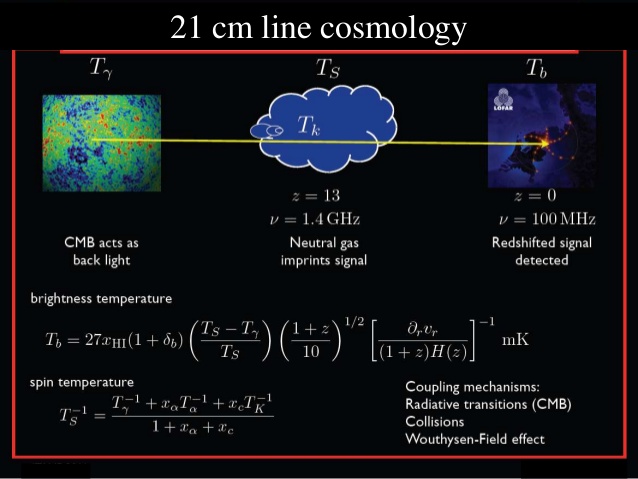
Whenever “cosmic dawn” occurred, whenever these first galaxies arrived, every piece of evidence points to a timetable of 200-250 million years as the main origin of the first galaxies. This may yet be observable by JWST, although no candidate galaxy from earlier than 320 million years has yet been verified by spectroscopic observations. The first galaxies required a large number of steps to happen first: they needed stars and star clusters to form, and they needed for gravity to bring these star clusters together into larger clumps. But once you make these first galaxies, they then become the largest cosmic structures to exist for their time, and they will continue to grow, attracting not only star clusters and gas, but additional small galaxies.
The cosmic web has taken its first major step up, and will continue to grow further, and more complex, over the hundreds of millions and billions of years to follow. Early on, galaxies grow primarily via mergers of small, low-mass clumps and clusters of matter, while later on, it will be by gradual accretion and gravitational infall. Meanwhile, the regions that were born with smaller initial overdensities will continue to grow, forming stars for the first (or second) time in places where no stars formed earlier. The great cosmic story of forming structures doesn’t happen all at once, but in bits-and-pieces throughout the cosmos. But once the first galaxies take shape, the race to form galaxies like our own has officially begun.
